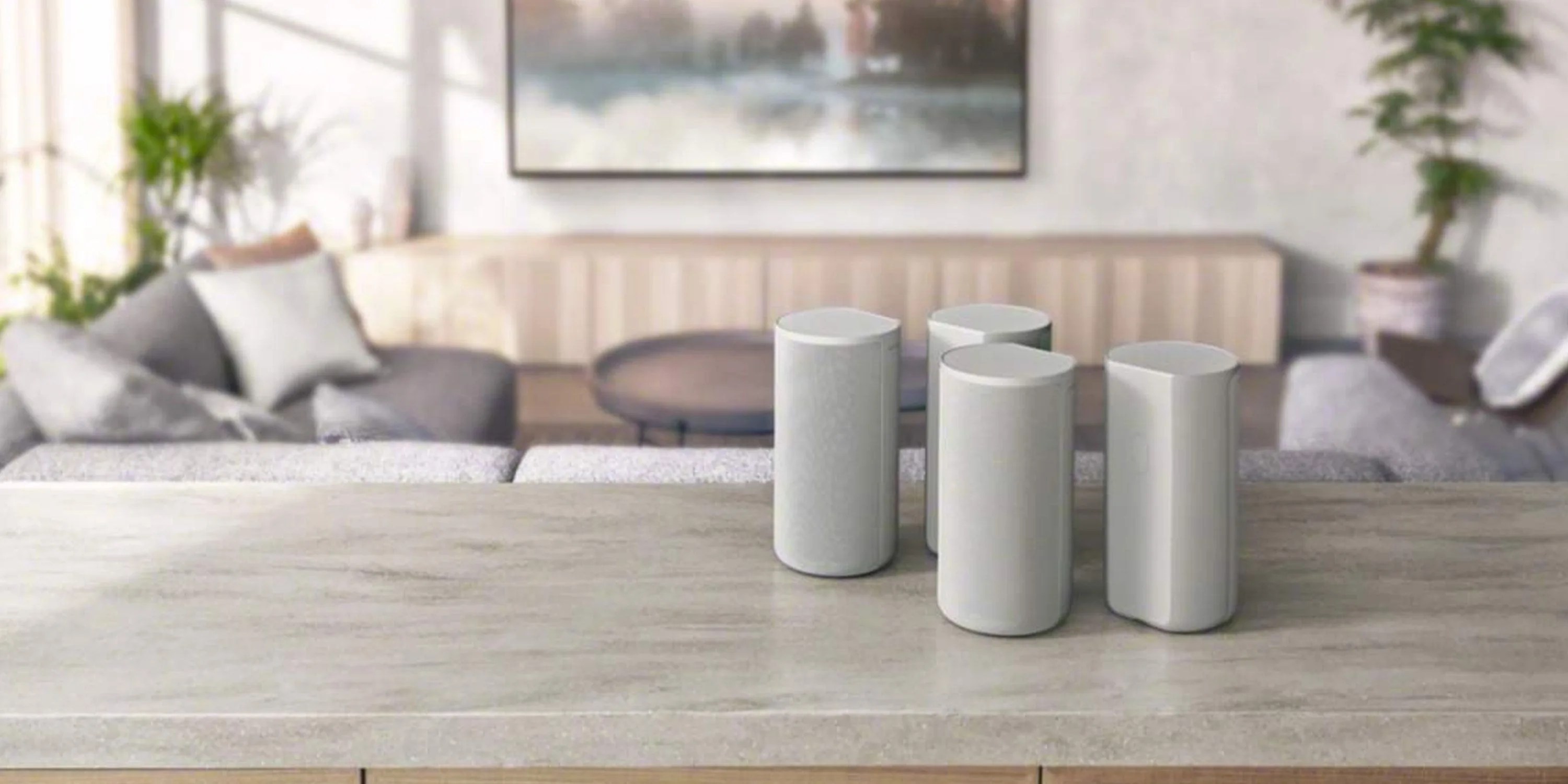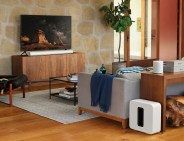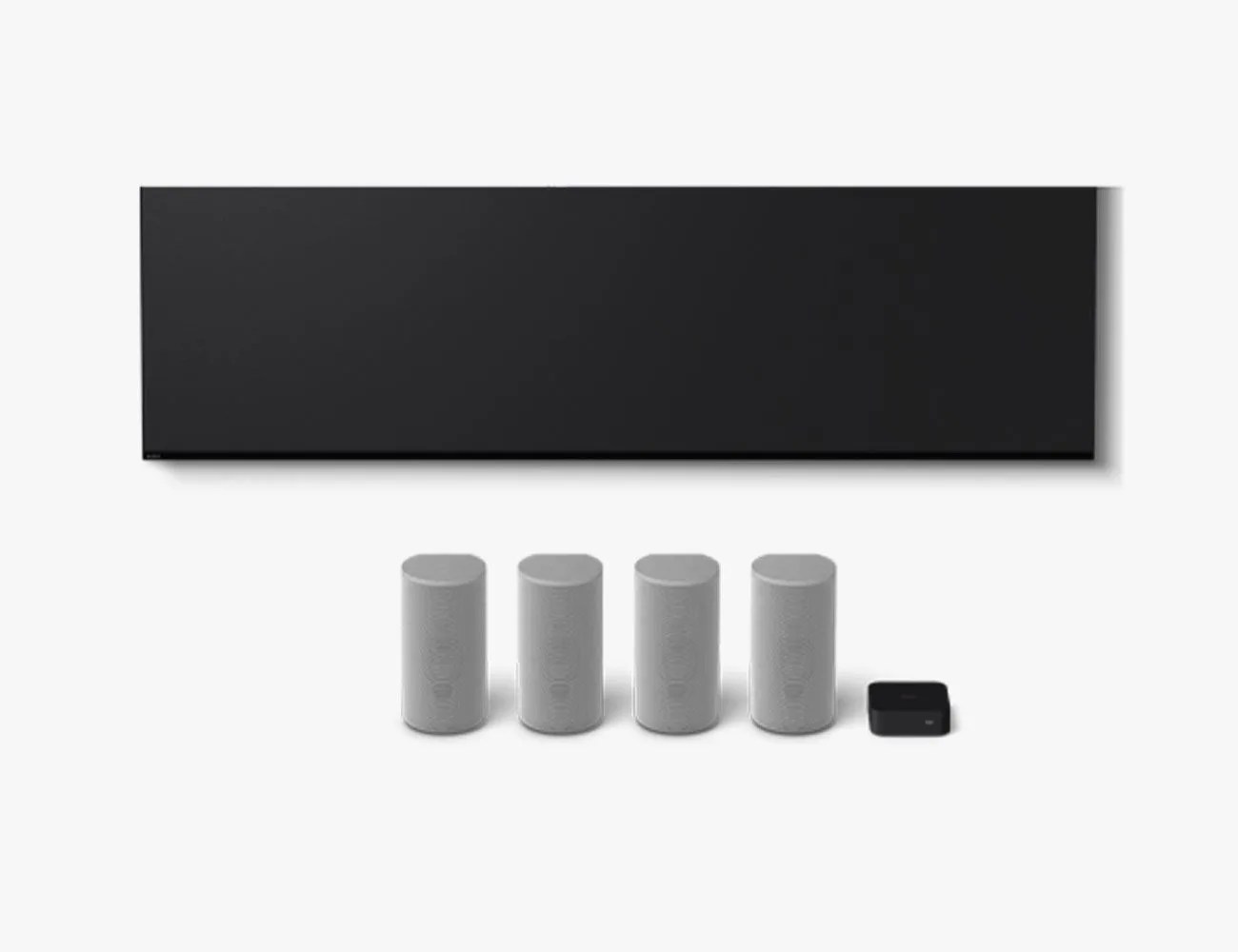Sony recently announced two new Dolby Atmos home theater systems. The Sony HT-A7000 ($1,300) is traditional: a high-end soundbar that connects directly to your TV with the option for rear-channel speakers and subwoofers to make a full surround system. Then there’s the Sony HT-A9 ($1,800), which is a completely different animal. In fact, there’s nothing else like it.
The Sony HT-A9 is a system of four wireless speakers and a control box that plugs directly into your TV. The wireless speakers — each of which has a tweeter-and-woofer combo, rear bass port and an up-firing speaker to create virtual height channels — are designed to be placed around the room and work as dedicated front-right, front-left, rear-right and rear-left channels for your TV. There’s no soundbar or dedicated center-channel speaker, which is what makes the Sony Ht-A9 so different.
“We measure the distance between the speakers and calibrate using spatial sound mapping technology.”
Sony’s new system was designed to appeal to people who are “serious” about their home theater, but who might balk at the complicated setup process normally associated with AVR surround systems. The Sony HT- A9 wasn’t designed to “kill the soundbar,” but instead to try and move beyond it.
The Sony HT- A9’s setup is a breeze. After placing the speakers around the room, you plug the control box into your TV and — after a few remote button pushes — the speakers auto-calibrate themselves using a Sonos-like process of playing tones and chirps. It’s not only simple, but it also frees you from having to place various elements in precise positions because the system will just even itself out in calibration.
“We can accurately measure the distance between the speakers, as well as the room boundary and the ceiling, and then we can calibrate it using the spatial sound mapping technology to optimize it,” said Greg Carlsson, one of Sony’s audio engineer who helped bright the HT-A9 to life. “So it’s not only levels and delays, but it’s knowing the precise locations of the speakers so that we can create virtual speakers.” In this way, you don’t have to rearrange your room around the Sony HT- A9 speakers, it will work within the setup you already have — and still sound great.



